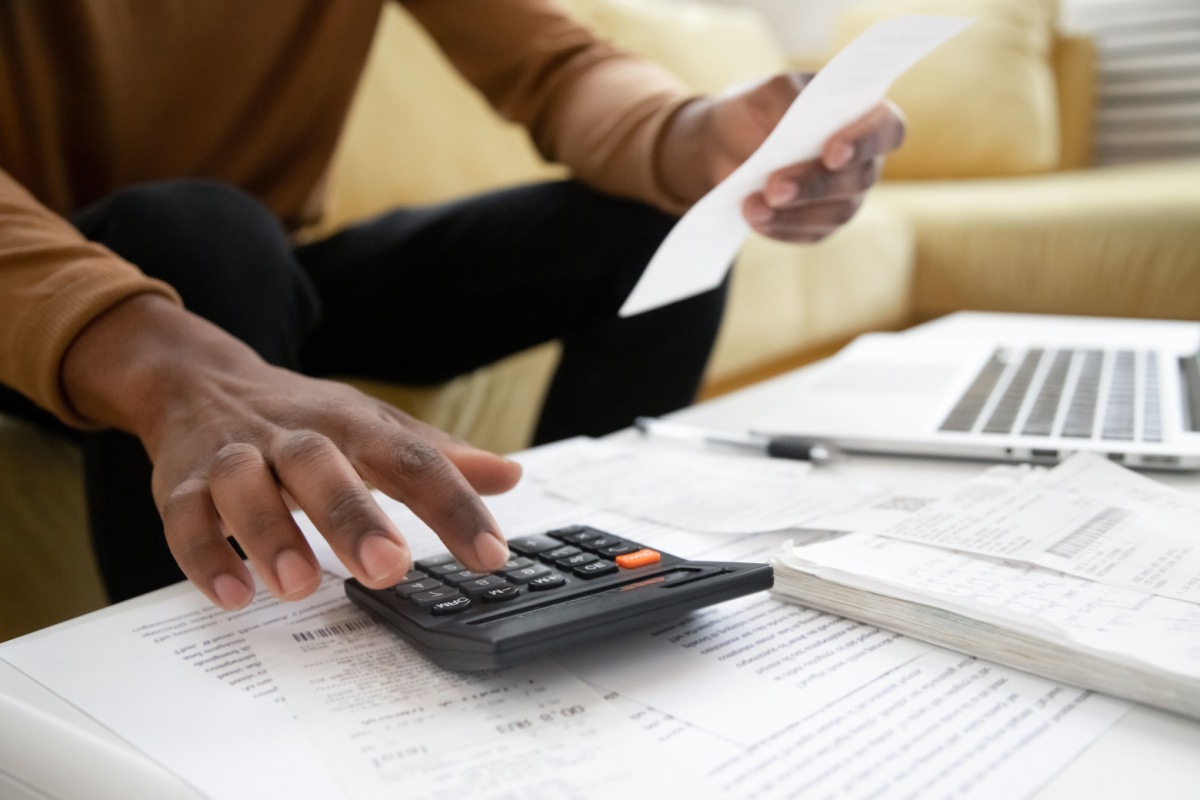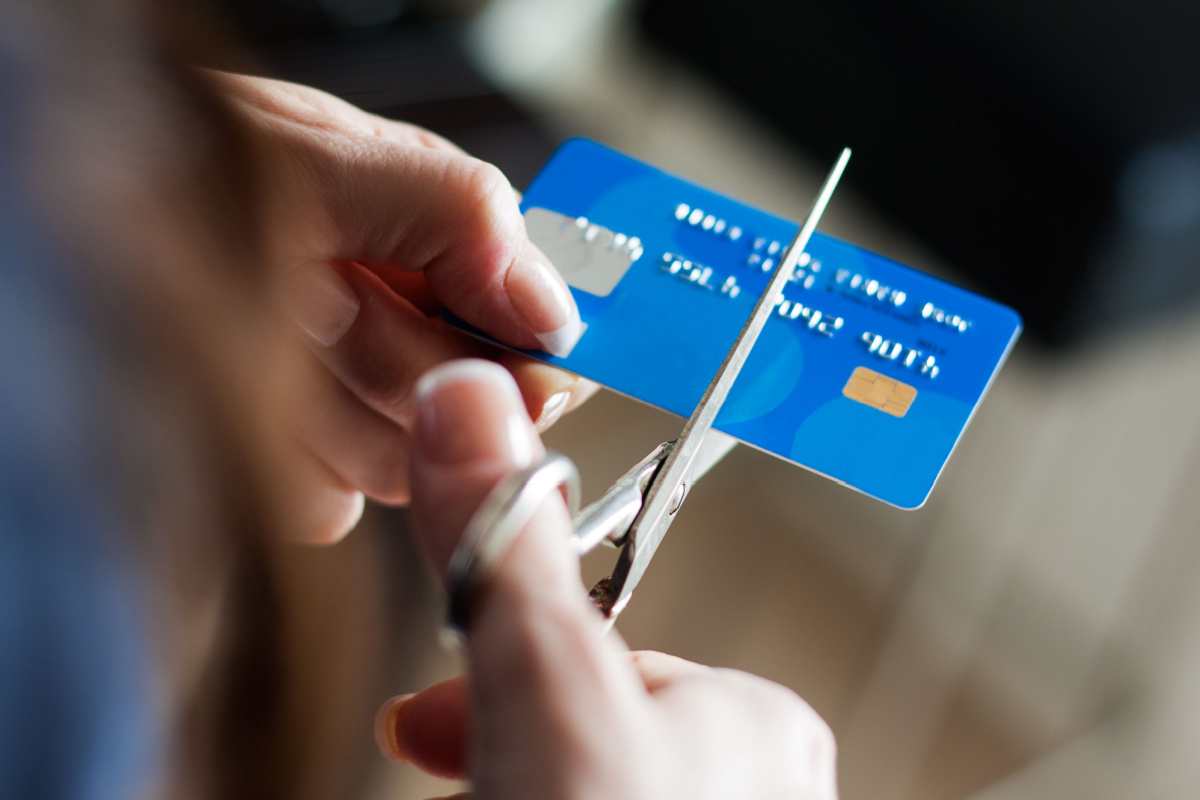How to Get Out of Debt: Beginning Your Journey Towards Financial Independence
Owing money can be like carrying a mountain on your back – so daunting that discovering how to get out of debt can seem impossible.
In fact, of the 61% of Americans who are in credit card debt, 23% of them acknowledge that they will owe more as months go on.
However, it is possible to regain control of your finances and eliminate debt. This step-by-step guide focusing on how to get out of debt will outline an actionable plan to help you navigate the path to financial freedom.
Tips on How to Get Out of Debt Fast
Tackling debt might seem tough, but it's definitely doable. Here are some practical steps you can take to get your finances back on track and move toward a debt-free life.
Assess and Document Your Debt Situation
Start improving your financial health by listing all your debts, including how much you owe, the interest rates, and the minimum payments for each.
 This will help you understand the best way to pay off debt. Knowing all these details helps you plan how to pay off your debts in an organized way. Here’s how to get started:
This will help you understand the best way to pay off debt. Knowing all these details helps you plan how to pay off your debts in an organized way. Here’s how to get started:
- Create a List of All Debts: As you set up your monthly budget, be specific about your debts. Record the total amount owed and the interest rates for each. These figures give you a clear view of what you owe and the cost of your debt.
- Organize Your List: Arrange your debts in a way that makes it easy to prioritize. You can order them from the highest interest rate to the lowest, or you may choose to list them from the smallest balance to the largest if you prefer the debt snowball method, which involves tackling smaller debts first for psychological motivation.
- Use a Debt Repayment Calculator: Once you have your list of debts, use a debt repayment calculator. A debt repayment calculator is a tool designed to help individuals understand how long it will take to pay off their debt and how much they will pay in total, including interest. Users input key information such as the total amount owed, the annual interest rate, and their monthly payment amount. The calculator uses this information to estimate how long it will take to pay off the debt and interest.
Set Up a Budget
Following the assessment and organization of your debts, the next step is establishing a monthly budget that includes debt repayment. This strategy directs your financial planning, ensuring you thoroughly understand your income, a detailed record of your expenses, and enough money to meet your loan obligations. Here’s how to set a budget:
- Calculate Your Monthly Income: Determine how much money you earn each month. This includes your salary, any additional sources of income, or side gigs. Ensure that you have an accurate figure for your total monthly income.
- List Your Expenses: Combining your monthly expenses is key; this includes fixed costs like housing, utilities, groceries, transportation, insurance, and loan payments. It also encompasses discretionary spending such as dining out, entertainment, non-essential shopping, and various subscriptions. By categorizing these expenses, you gain clarity on your financial habits.
- Creating Your Budget: To start, divide your monthly income into different categories. Essential expenses, like housing, utilities, groceries, and transportation, come first and usually take up 50% to 60% of your income. Next, assign 20% to 30% to financial goals, which includes debt repayment. Here, depending on your strategy, prioritize debts with the highest interest rates or smallest balances. The remaining 10% to 30% can be divided between savings and personal spending on entertainment, dining out, or hobbies. A savings account can serve as a financial buffer to cover unexpected expenses, reducing the need to rely on high-interest options like payday loans in the future.
- Monitor and Adjust: Each month, take time to review your budget. This helps you track spending and see your debt repayment progress. If you're spending less in some areas, move that extra money to pay off debt faster. If you're spending more, find ways to cut back. Also, if your income goes up, use some of the extra money to reduce debt quickly.
Choose a Debt Repayment Method
While paying the minimum monthly balance is one of the best ways to pay off debt, numerous other strategies are available to repay debt. Two popular approaches have gained prominence: the Avalanche Approach and the Snowball Technique.
If you’re able to pay more than the minimum balance and are looking to save on overall interest, consider the following debt repayment methods:
The Avalanche Approach: Tackling High-Interest Debts First
With this method, you list your debts by interest rate and pay extra on the one with the highest rate while maintaining minimum payments on the rest. This strategy is efficient in reducing the amount of interest paid over time, as it tackles the most expensive debts upfront.
The Snowball Technique: Gain Momentum by Clearing Small Debts
Conversely, with the snowball technique, you list your debts from smallest to largest and focus on paying off the smallest balance first while making minimum payments on the others. This approach aims to quickly clear individual debts, providing motivational wins that encourage continued debt repayment.
Limit or Eliminate Unnecessary Expenses
Getting out of debt quickly also means understanding how you spend money. After checking your budget, see where you can cut back on things you don't really need. The money you save can go towards paying off your debts faster. This helps you get out of debt sooner and puts you on the path to a more secure financial future. Here are some areas you can cut back on spending:
- Socializing: Rather than going out for drinks or dinner with friends, consider hosting gatherings every other weekend or organizing a monthly potluck. This approach encourages cost-sharing among friends and reduces the frequency of spending on social outings.
- Wardrobe Updates: The average U.S. family spends $1,500 annually on clothes. Re-evaluating your wardrobe needs and setting a budget can help in reducing this expense.
- Dining: Shift from eating out, which costs an average American family $300 per month, to preparing meals at home. This change can significantly cut down your food expenses, especially considering that cooking at home can be up to five times cheaper than ordering delivery.
- Entertainment: Review and potentially reduce your subscription services. The average American spends $2,900 annually on entertainment, including streaming services. Unsubscribing from less-used platforms can contribute to your savings.
Stop Using Credit Cards
Paying off debt involves more than just meeting the monthly minimum payments. It also means actively limiting credit card usage to avoid accumulating new debt while trying to clear existing balances.

To effectively limit credit card spending, consider these steps:
- Understand Spending Triggers: Start by recognizing the times or emotions that drive you to use your credit card excessively. This awareness can help you avoid unnecessary purchases.
- Opt for Cash or Debit: Make a conscious shift to using cash or a debit card for your daily expenses. Feeling the immediate impact of spending can help you stay within your financial boundaries.
- Remove Online Temptations: Take a moment to delete your credit card information from online stores and apps. This small barrier can pause impulsive buying and make you rethink your purchases.
- Create a Monthly Credit Card Limit: Set a realistic limit for your credit card use, aligned with your budget and repayment plan. Regularly check your statements to ensure you're staying within this limit and adjust it as needed.
- Track and Review Expenditures: Utilize a budgeting app or maintain a spending diary. Regularly reviewing where your money goes can illuminate areas where you can cut back.
Boost Your Income Streams
Creating additional income streams is a proactive approach to managing and eliminating debt. Diversifying your income can create a more stable financial foundation and accelerate debt repayment. Here are some ways you can boost your income:
- Identify Marketable Skills: Take skills-based assessments to help you identify your strengths and weaknesses. Examples include work sample tests, cognitive ability tests, personality tests, hard skills assessments, and job knowledge tests. Once you understand your strengths, research industries and markets that are currently thriving for freelancers. This will allow you to target your efforts effectively and find opportunities that are in high demand.
- Freelance or Part-Time Work: Actively seek freelance opportunities or part-time jobs that align with your skills and interests. Utilize platforms like Upwork, Fiverr, or local job listings to find gigs.
- Skill Enhancement: Investing in self-improvement through courses or certifications, especially in your field, can be a game-changer for career advancement. These courses are widely accessible, both online and offline, and come in free and paid options. Online platforms like Coursera, edX, Udemy, LinkedIn Learning, and Skillshare offer diverse courses, some even created by top universities. Getting a certification or completing educational courses could polish your skills and give you a leg up in salary negotiations.
- Networking: Connect with colleagues and build relationships with mentors, especially on platforms like LinkedIn. Attend industry events, which you can find on sites like Eventbrite or Meetup. This approach can open doors to higher-paying opportunities and provide valuable insights into your field.
- Performance Metrics: Keep track of your accomplishments and document how your work contributes to your company's success. Use these achievements to negotiate better pay and demonstrate your value.
- Seek Feedback: Regularly ask for feedback from supervisors and use it to improve your skills and job performance. This proactive approach can enhance your chances of career advancement.
Consider Balance Transfers and Debt Consolidation
After exploring ways to boost your income, another effective strategy for managing and eliminating debt is considering balance transfers and debt consolidation. These methods can simplify your debt payments and potentially reduce the amount of interest you pay over time.
Balance Transfers: This involves moving high-interest debts, often from credit cards, to a card with a lower interest rate. Many credit cards offer introductory periods with low or no interest, allowing you to pay down your principal faster. However, it's important to check the transfer fees and the standard interest rate after the introductory period. This strategy is most effective if you can pay off the transferred balance before the promotional rate expires.
Debt Consolidation: This approach combines multiple debts into a single loan, ideally with a lower interest rate. Debt consolidation loans can streamline your payments and often result in a lower overall monthly payment. When considering consolidation, compare the interest rates and terms from different lenders.
When to Seek Expert Debt Assistance
You should actively seek expert debt assistance when your goal is to pay off debt fast, and you're facing challenges like high interest rates, numerous creditors, or unaffordable monthly payments. As soon as you notice that your debt is becoming a burden, take action by reaching out to a financial advisor or credit counselor. Here’s how you can find assistance to pay debt:
- Use Online Matching Tools: Platforms like SmartAsset or WiserAdvisor offer online quizzes where you input details about your financial situation, and they match you with advisors with debt management expertise.
- Certified Financial Planners: To find a certified financial planner, you can search the CFP Board’s “Let’s Make a Plan” website. Under the “How a CFP Professional Can Help You” section, you can specify you need help with debt management.
- National Association of Personal Financial Advisors (NAPFA): You can visit the NAPFA website and use their "Find an Advisor" tool. Just filter for advisors who help with 'Debt Management' to find one that offers this service. You can further check their profiles for specializations, qualifications, and client reviews.
Understanding Your Debt
Navigating the emotional maze of debt can be overwhelming, but a clearer understanding of what you owe is a powerful first step. By unraveling the differences between secured and unsecured, as well as revolving and installment loans, you'll be better equipped to strategize your debt repayment.
Secured vs. Unsecured Debt
Secured debt is backed by collateral, such as a house in a mortgage or a car in an auto loan. This type of debt is often used for larger purchases or in situations where the borrower needs to demonstrate their ability to repay. Secured loans typically can come with more competitive interest rates and longer terms. But beware – if you fail to make timely payments, the lender can repossess your collateral to recoup their losses.
 On the other hand, unsecured debt, like most credit cards and personal loans, doesn't require collateral. This type of debt is often suitable for consumers who don't have assets to offer as collateral or who need quick, short-term financing. Typically, it comes with more stringent requirements like higher credit scores and income. This increased risk for the lender may lead to higher interest rates. However, the advantage of unsecured debt is that you do not risk repossession of your assets in the event of a default.
On the other hand, unsecured debt, like most credit cards and personal loans, doesn't require collateral. This type of debt is often suitable for consumers who don't have assets to offer as collateral or who need quick, short-term financing. Typically, it comes with more stringent requirements like higher credit scores and income. This increased risk for the lender may lead to higher interest rates. However, the advantage of unsecured debt is that you do not risk repossession of your assets in the event of a default.
Revolving vs. Installment Debt
Revolving debt offers you a credit limit – a maximum amount of money you can use for purchases or cash advances. You can choose how much of this limit to use, and you'll only pay interest on the amount you've borrowed, not on the unused credit.
This type of credit is ongoing; as long as you make the minimum payments and stay below your credit limit, you can borrow and repay as often as you like. Credit cards are the most common form of revolving debt but often come with high-interest rates. Regular, responsible use of revolving debt can also be beneficial for building a positive credit history, provided that balances are managed well and payments are made on time.
Installment debt is a loan that gives you a lump sum of money upfront, which you then repay in consistent, regular payments over a fixed period. These payments cover part of the principal amount you borrowed plus interest. Mortgages, auto loans, and student loans are typical examples of installment debt.
The interest rate is usually fixed, which means you'll pay the same amount each month until the debt is paid off. Once an installment loan is paid off, the account is closed, and you will need to reapply for financing if you need to borrow money again. Installment loans make it easier to budget as you know exactly how much you need to pay each month and for how long.
Conclusion
These tips on how to get out of debt fast offer a solid foundation for your financial journey. By implementing these strategies, you can take meaningful steps toward achieving financial stability and reducing your debt burden. Remember, your path to financial freedom is a gradual process, and each small step forward is a step in the right direction.





